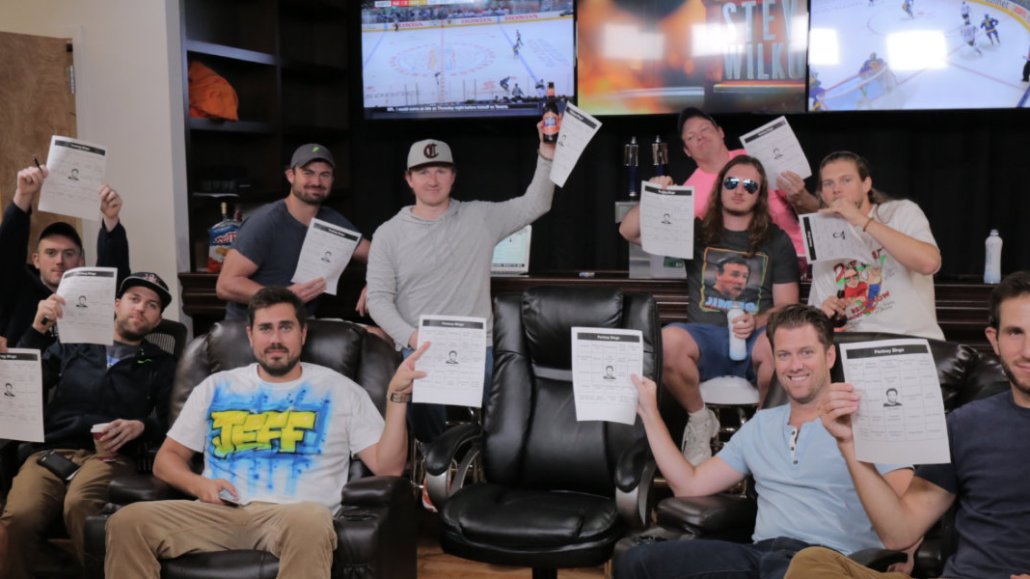Barstool Sports got 12,500 people to pay to watch amateur boxing

Barstool Sports is not for everyone. But for those that self-identify as “stoolies,” it’s a media brand they care enough about to pay for.
On March 3rd, Barstool Sports hosted an online pay-per-view, during which the publisher broadcast a four-hour boxing event held inside of an armory in the woods of West Virginia. The event, called “The Rough and Rowdy Brawl,” features local boxers duking it out for a cash prizes over two nights. This year, Barstool had some skin in the game as one of its employees competed in the the tournament. Charging $5 per viewer on its own site, Barstool’s PPV had more than 12,500 customers.
The $60,000 in revenue is hardly going to make the company flush, but getting people to pay for content, in any increment, is top of mind for many publishers. Barstool, which now counts The Chernin Group as a majority owner, might only get 10 million visitors per month, but that audience is highly engaged and willing to open their wallets. A third of the company’s business comes from selling merchandise, which Barstool has been doing since the company started as a local, Boston-area newspaper in 2003.
“I’ve had to think about revenue and the business from the very beginning,” said Dave Portnoy, founder and content chief at Barstool Sports. “We weren’t going to survive just on ad revenue: we’re not big enough and our content can be too hard or difficult [for some advertisers]. But we knew we could always get money from our readers because we’ve had a super loyal audience that’s very connected. That has been with us forever.”
“The only group of people that was interested in funding Barstool were the fans themselves,” added Erika Nardini, CEO of Barstool Sports. “That’s a valuable relationship and we take it very seriously here.”
The West Virginia PPV was a unique event, with Barstool playing a unique role by having an employee compete, but its success means the company plans to do more content that loyalists are willing to pay for.
Last fall, Barstool hosted a Black Friday telethon during which the company sold a lot of its merchandise. More recently, the publisher partnered with Bud Light to host a March Madness bracket challenge on Facebook Live. Earlier this week, Barstool broadcast a one-on-one basketball game between two of its employees, which it streamed live on its mobile app. It might seem a little fly by the seat of your pants — the boxing PPV took less than week to put together — but Barstool is constantly in a position to create and generate revenue from content.
Ad position: web_incontent_pos1
“What I’m trying to do is take something that’s so raw and compelling to a very core audience, and see what other forms it can take,” said Nardini. “The PPV was a great example of how we can harness the best of Barstool Sports, and not change it in any way, but bring it to a new medium.”
Barstool is also incentivized to experiment with direct payments by the fact that its audience does not care about the mainstream notion of “premium.” The PPV, for instance, was produced by four people on site, including Portnoy and the staffer competing in the event, with some additional support back at the company’s New York offices. Barstool’s Super Bowl-centric TV show, which aired for four nights on Comedy Central the week before the game, consisted of Portnoy and two other Barstool personalities having conversations at a bar. The show drew an average of 217,000 to 310,000 viewers during the week.
“You’re starting to see us in more places because we’re starting to experiment with the right way to deliver content to our audience and to monetize it,” Nardini said.
This includes live events, which Barstool wants to do more of starting later this year. Previously, Barstool would host small Boston-area events for sponsors, which grew to going on the road to host concerts and other events on college campuses. That stopped after a controversial “Blackout” tour in 2012. Rebooting the events business, including larger festivals, is a priority.
“It’s a huge undertaking and something that’s being discussed right now, but we’re planning for it to be a major revenue stream,” Portnoy said. “At one point, events were as high as 70 or 80 percent of our overall business.”
More in Media

NewFronts Briefing: Samsung, Condé Nast, Roku focus presentations on new ad formats and category-specific inventory
Day two of IAB’s NewFronts featured presentations from Samsung, Condé Nast and Roku, highlighting new partnerships, ad formats and inventory, as well as new AI capabilities.

The Athletic to raise ad prices as it paces to hit 3 million newsletter subscribers
The New York Times’ sports site The Athletic is about to hit 3 million total newsletter subscribers. It plans to raise ad prices as as a result of this nearly 20% year over year increase.

NewFronts Briefing: Google, Vizio and news publishers pitch marketers with new ad offerings and range of content categories
Day one of the 2024 IAB NewFronts featured presentations from Google and Vizio, as well as a spotlight on news publishers.
Ad position: web_bfu



